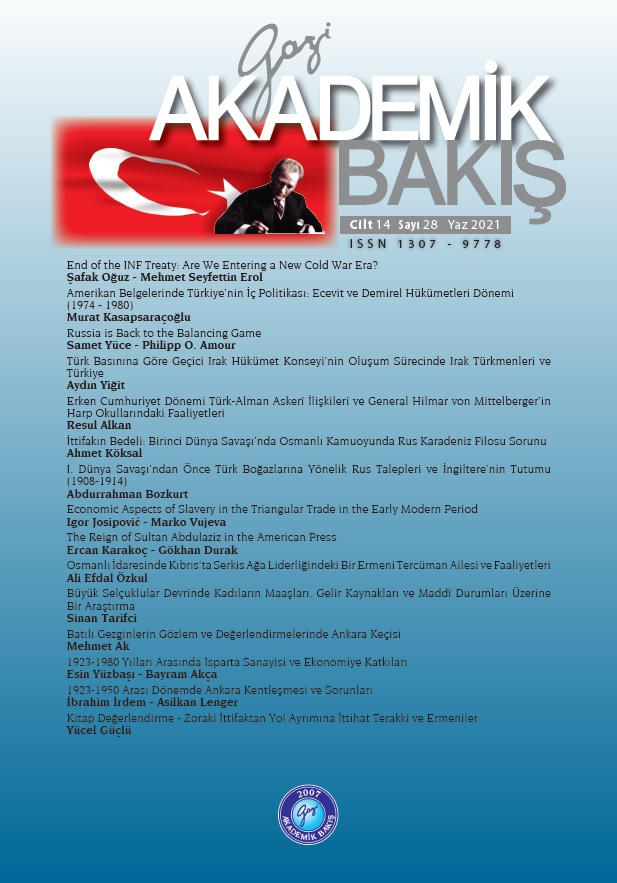Batılı Gezginlerin Gözlem ve Değerlendirmelerinde Ankara Keçisi
Angora Goat Based on the Observations and Evaluations of Western Travellers
Author(s): Mehmet AkSubject(s): Economic history, Cultural Anthropology / Ethnology, Culture and social structure
Published by: Gazi Akademik Bakış
Keywords: Angora Goat; Goat; Mohair; Sof Fabric; Sarape;
Summary/Abstract: The travellers who wandered across Ottoman State gave detailed information about the Angora goat. They investigated the goat as its origin and speculated on the possibility that it may have belonged to them with an orientalist point of view, but they accepted that it was brought by Turks from the Geography of Turkistan between the 11thand 13th centuries. They analysed the Angora goats in terms of appearance, the environment they lived, and their wool (mohair). They gave information about shearing of Angora goat, combing spinning, weaving, and fabric types.Yarn and fabric produced from mohair attracted the attentions in Europe and the rest the world. At the same time,taking the goat and raw mohair out of the country was forbidden. While the interests of the Westerners into Angora goat were in increase, initiatives to take the goat out of the country started in the 16th century onwards. They want to possess the goat and control mohair production. Exports of raw mohair and goat paved the way in the 19th century.Yet, the desired production from the goats which were taken to Spain, France, America and Australia was not gained.Production trials in British colonial South Africa have been successful. Thus, in the international market, South African mohair became a rival of Turkish mohair in the last quarter of the 19th century. Despite this, the quality of Ankara mohair could not be achieved anywhere in the world. The state banned the exportation of goat due to fluctuations in the mohair market, but this was not a certain solution. While the Angora goat, mohair, yarn and fabric were important sources of income for the people in Ankara, this situation gradually deteriorated in the 19th century Domestic mohair enterprises could not compete against the machine production that developed after the Industrial Revolution. The unilateral processing of capitulations, 1838 Treaty of Balta Liman, and the availability of mohair exportation negatively affected Turkish manufacturers and domestic enterprises. While Turkish producers who feed goats decreased, producers and businesses lost their earning, and the state lost tax revenues.
Journal: Gazi Akademik Bakış
- Issue Year: 14/2021
- Issue No: 28
- Page Range: 267-302
- Page Count: 36
- Language: Turkish

